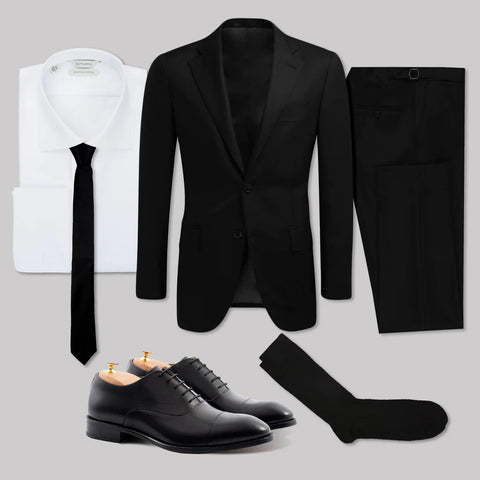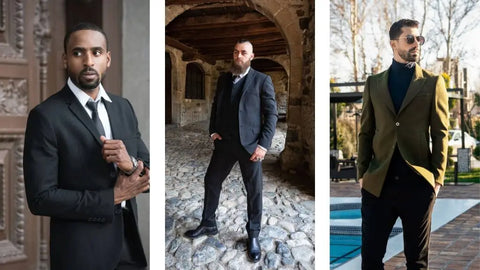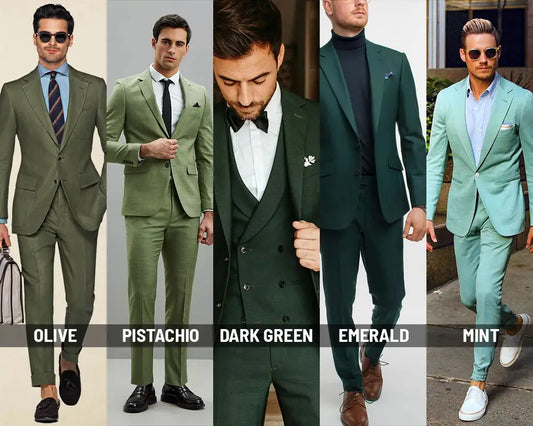Losing a loved one is a challenging experience, and attending a funeral requires not only emotional strength but also thoughtful consideration of what to wear. As a man, choosing appropriate funeral attire is a way to express sympathy, respect, and understanding during a solemn occasion. In this comprehensive guide, we will delve into the nuanced world of funeral attire for men, exploring traditional choices, cultural considerations, modern approaches, and practical tips to help you navigate this delicate aspect with grace and sensitivity.
Traditional Funeral Attire for Men
Symbolism of Black Clothing

Traditionally, black has been the predominant color associated with mourning in many Western cultures. This color symbolizes grief and serves as a visual representation of the collective sadness felt at the loss. While black is not mandatory, wearing it or other dark, subdued colors is a way to express solemnity and respect for the grieving family.
Conservative Choices for Men
Conservative clothing is a timeless and safe choice for men attending funerals. Opt for a well-fitted suit in black, charcoal gray, or navy blue. If a suit is not available, dress shirts and dress pants in neutral tones are acceptable alternatives. Ties should be subdued and avoid bright colors or patterns.
Appropriate Accessories for Men
Accessories play a crucial role in completing funeral attire for men. Choose a simple and understated tie, avoiding flashy patterns or bold colors. A black or dark-colored belt and dress shoes are essential to complete the look. Keep accessories minimal to maintain a dignified appearance.
Cultural Considerations for Men's Funeral Attire
Diverse Funeral Attire Across Cultures
It's crucial to recognize that funeral attire can vary significantly across different cultures. While black is a common mourning color in Western traditions, other cultures may have different color associations or specific garments for mourning. Understanding and respecting these cultural differences is crucial when selecting funeral attire.
Honoring Cultural Sensitivities
When attending a funeral that follows cultural traditions different from your own, it's important to educate yourself about the expected attire. This might include specific colors, styles, or accessories that hold cultural significance. Adhering to these expectations is a way of showing respect for the grieving family and their cultural heritage.
Modern Approaches to Funeral Dress for Men

Evolving Color Choices
Modern funeral attire for men has evolved beyond strict adherence to black. While black remains a classic choice, darker neutrals such as charcoal gray and navy blue are now widely accepted. This shift allows for more flexibility in expressing respect while acknowledging changing societal norms.
Embracing Conservative Casual Wear
In contemporary times, there is a growing acceptance of conservative casual wear at funerals. While formal suits are still common, well-chosen and respectful casual wear is becoming more widely embraced. This might include dress shirts with dress pants or khakis, acknowledging that the emphasis is on the gesture of attending.
Personalization and Individual Expression
Some funerals celebrate the life of the departed rather than solely mourning their passing. In such cases, personalizing attire with subtle nods to the interests or personality of the deceased can be a thoughtful and meaningful choice for men. This could involve incorporating accessories or clothing items that reflect the individuality of the person being remembered.
Accessories and Grooming Guidelines for Men
Subtle and Respectful Accessories
For men, accessories should complement the overall respectful tone of funeral attire. Opt for a subtle tie clip or cufflinks, avoiding anything flashy or attention-grabbing. Minimalism is key, ensuring that accessories do not distract from the solemnity of the occasion.
Grooming Guidelines for Men
Proper grooming is a sign of respect in funeral settings. For men, this may involve clean-shaven or neatly trimmed facial hair. The goal is to present a well-groomed and respectful appearance. Hairstyles should be conservative, avoiding overly trendy or unkempt looks.
Practical Tips for Men's Funeral Attire
Reviewing Invitations for Dress Code
When uncertain about the appropriate attire, it's always wise to check the funeral invitation or announcement for any specified dress code. Some families may express their wishes regarding attire, providing clear guidance on what is considered respectful and appropriate.
Adapting Attire Based on Venue and Weather
Consider the venue and weather conditions when selecting funeral attire. Outdoor services may require appropriate footwear, and weather conditions should be taken into account for comfort. Being prepared for the specific setting ensures that your attire aligns with the tone and atmosphere of the event.
Prioritizing Comfort and Modesty
Funerals can be emotionally challenging, so prioritizing comfort is crucial for men. Choose clothing that allows you to move comfortably and maintains modesty, ensuring you can focus on offering support to those in mourning without being distracted by discomfort.
Common Concerns Addressed
Striking a Balance Between Respect and Personal Style
Balancing respect for the occasion with personal style can be challenging for men. However, it's possible to choose attire that meets both criteria. Opt for subtle expressions of personal style within the boundaries of appropriateness, ensuring that your outfit reflects both respect for the occasion and your individuality.
Navigating Unclear Dress Codes
If there's uncertainty about the dress code, it's advisable for men to choose slightly more formal attire. It's always more respectful to be slightly overdressed than to risk appearing underdressed for such a solemn occasion. Additionally, you can seek guidance from the funeral organizers or close family members.
Adjusting Attire for Different Funeral Settings
Funerals can take various forms, from religious ceremonies to celebrations of life. Men should adapt their attire to suit the specific setting, ensuring their clothing aligns with the tone and atmosphere of the event. Consider the cultural and personal aspects of the deceased and their family when making wardrobe choices.
Conclusion
In the somber moments of a funeral, what a man wears becomes a silent but powerful form of communication. It speaks volumes about his respect for the departed and his acknowledgment of the grief experienced by their loved ones. While tradition and cultural norms play a role in guiding attire choices, modern approaches allow for flexibility, emphasizing the importance of support over strict dress codes. Remember, the key is to be respectful, considerate, and understanding of the diverse ways people express their grief.








